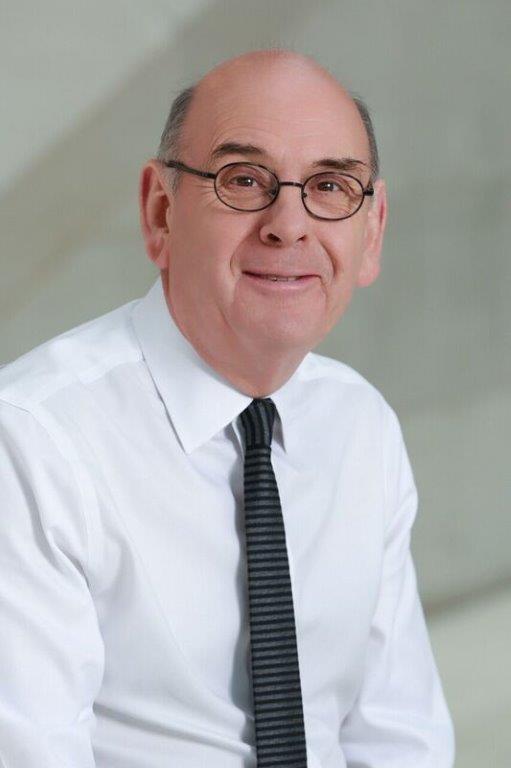How do you program an orchestra concert season?
Q&A WITH DSO VP OF ARTISTIC OPERATIONS, PETER CZORNYJ

How and when do you begin programming the DSO’s season?
This week, I am listening to the orchestra rehearse Mahler’s Second Symphony and finishing negotiating the contracts for all guest artists for the DSO’s 18/19 season. At the same time, we are now already starting to plan programs for the 19/20 season. There are program ideas already on the calendar for April 2020, which means that we are very often planning more than two years ahead of when the concerts will take place.
How (and when) do you choose guest artists and conductors? Do they get to be involved in programming their concerts?
Each planning cycle starts with the dates and weeks when the Music Director is available, and then we add around those dates the weeks for guest conductors. Sometimes, soloist availabilities will be penciled in the calendar first, and then confirmed when the conductor dates are all finalized. It’s a fascinating juggling act, and I find it quite gratifying, because there are many excellent conductors and soloists who really want to hold dates for the DSO this far out.
I learned very early that it is important to be ahead of the game and to get as much initial planning done, and as soon as possible, so that there are no or only very few surprises, positive or otherwise, as you get to the finish line.
The process of deciding the programs is a rewarding collective discussion that involves all parties – the conductor, the soloists, the chorus director (if it includes a choral work), our musicians, the President & CEO, the marketing and communications directors. After that, someone gets to make the decision and that role falls to the artistic team, which is the music director and me or the person in the role of VP of Artistic Operations. The really exciting part is speaking with the conductors and soloists in the final phase and agreeing on a program that everyone is happy with!
Do members of the orchestra get involved with this process?
We are always keen to learn from our musicians how they have enjoyed a particular program or enjoyed playing for a conductor or with a soloist. I do actively seek out that conversation and like to get that feedback from our musicians. They always have some interesting ideas for repertoire or possible soloist or conductor ideas to explore. My staff colleagues also have great ideas for programming – and then I really appreciate the thoughts, comments and ideas of our donors and patrons. Everyone should feel included, and someone’s awesome Lutoslawski experience will be wonderfully balanced out by another person’s great Brahms or Mozart experience.
When it comes to organizing individual concerts, what are some things you have to consider?
Everything goes into the blender when you’re planning a really good mix of programming ingredients. The pacing and spacing of dates and activities in the calendar are important, as are keeping a good overview of variety and diversity in the overall programming. There is no one, foolproof plan for a good program. Anything is possible but the desired outcome should be well-balanced constellations of great music, which will inspire great performances and lead to great audience experiences.
Starting concerts with an overture has oddly gone out of fashion but is again coming back. Ending with an overture can be exciting, too, at times. A symphony can be programmed on the first half, and then the big concerto, on a symphonic scale, can occupy the entire second half.
How much music should be on a good program?
Well, a really great program can have just 70 minutes of music on it, but there is nothing to say that a program with 100 minutes of music can’t be just as great.
Do you have a favorite orchestral work?
I have many. Some will surprise you, like Tchaikovsky’s ballet music, which I think is some of the most colorful and beautiful music ever written. But I also like Messiaen’s Turangalila Symphony, John Adams’s Harmonielehre, Vaughan Williams’s Sixth Symphony, Mozart’s Linz Symphony, Brahms’s Third Symphony, Hindemith’s Mathis der Maler Symphony, Tippett’s Piano Concerto, and, well I could go on and on.
What’s something that you haven’t been able to program on a DSO season that you would like to in the future?
Hmm, this is fun! Well, I’d be happy to start with the answers in the previous question. And then let’s add Handel’s Solomon – just as good as Messiah –, Haydn’s Harmoniemesse, Mozart 40 and the Mass in C Minor, Beethoven’s Missa Solemnis, Berlioz’s Romeo et Juliette Symphony, Liszt’s Faust Symphony, Tchaikovsky’s Manfred Symphony, Suite No. 3 and Second Piano Concerto, Mahler 7, 8 and 10, Sibelius 1 and 3, Vaughan Williams’s Sea Symphony, Stravinsky’s Symphony in Three Movements and Symphony of Psalms, Britten’s Cello Symphony and Spring Symphony, John Adams’s Doctor Atomic Symphony and much more!
Anything else you’d like to share about this process or the DSOs upcoming season?
I think we always have a good balance of familiar, new and unfamiliar pieces in our concert seasons. There are so many great musicians to hear and applaud on our 18/19 season, and it will be wonderful to hear the music that they perform for us, from Haydn to John Adams, from Mozart to Christopher Theofanidis and Arvo Pärt, from Beethoven to Bernstein, and visiting with Chopin, Dvořák, Liszt, Tchaikovsky, Wagner, Richard Strauss, Sibelius, Elgar, Nielsen, Walton, Copland and Rachmaninoff along the way. We look forward to sharing all of this with our audiences. Enjoy the music!